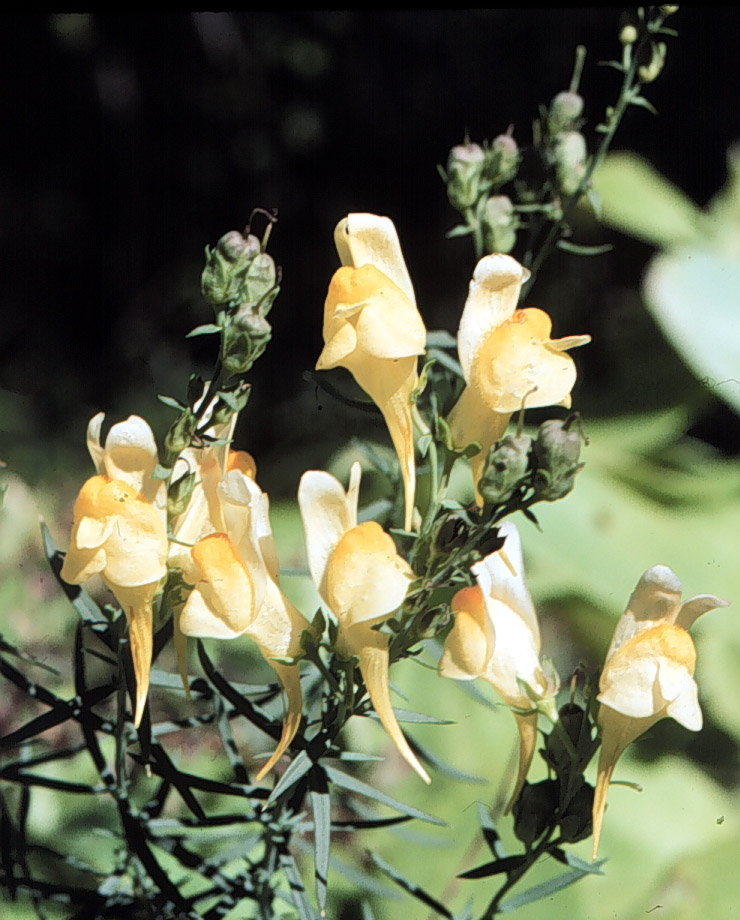Resource Library
Plant of the Week: Linaria vulgaris or Butter and Eggs, Toadflax
I can’t recall when I first learned of butter and eggs (Linaria vulgaris), but it was probably in my early horticultural career. It was a little, mostly insignificant, plant I saw occasionally in old, run-wild gardens or growing in the cracks at the top of old retaining walls. Recently I saw it again at the 1854 Headquarters House in Fayetteville, which serves as the home of the Washington County Historical Society. At a plant sale, I bought one for my rock garden.
Linaria is a genus of about 100 species of herbaceous perennials scattered in the northern hemisphere but with most species concentrated in Europe and Central Asia. Long known as classic members of the “scroph” family, since DNA reclassification in about 2000, they are now considered card carrying members of the plantain family along with snapdragons, foxgloves and penstemons.
Butter and eggs, also known as toadflax, is considered an invasive species and reported in all Canadian provinces, and most states, but looking at the county by county distribution map, it only seems to flourish in colder locations. It stays mostly north of the crapemyrtle / lilac line with just occasional reports south of there. It can invade rangeland and fields, but mostly is seen in waste places along roadways and trails.
Toadflax is an herbaceous perennial that can reach two feet tall but usually is half that with multiple branches arising from a tight crown. Plants spread by seed or sparingly by sending out rhizomes that slowly increase the size of the colony. The blue green leaves are an inch or more long, grasslike and resemble those of flax. The Latin name means “flax like”, with the epitaph meaning common.
This species produces a terminal raceme of flowers during summer and into the fall. The inch-long flowers are yellow, tightly two lipped with a single, downward-pointed nectary spur protruding behind the boxy body of the bloom that is specifically designed to accommodate a medium sized bee.
Plants with many colloquial names indicate it has been around a lot of people for a long time. Over twenty common names have been recognized for toadflax just in the English tongue; no telling how many are used everywhere it grows. The two most common monikers, toadflax and butter and eggs, may deserve explanation. Toadflax probably comes from a face-on look at the flower. The lower lip is golden orange in color, inflated and looks a bit like the protruding lower lip of a pouting toad, at least if you have a good imagination.
The butter and eggs name harkens back to a bygone era when most people raised their own chickens and churned their own butter. As everyone knows today, butter is yellow but so are eggs. But back in the day when chickens were all free range, egg yokes were golden orange, not the pale yellow as we see today with our caged laying hens. In fact, some chicken feed formulas include dried marigold blossoms to give the yolk a more authentic color.
Butter and eggs is a bit player in the flower garden. It can be used in the rock garden or in front of a mixed border or would be right at home in an old-fashioned garden restoration. It was used in an assortment of herbal remedies, so could be used if reconstructing an apothecary garden. There is no particular concern about it escaping, because, like crabgrass, it has already spread pretty much everywhere it will grow.
For more information about horticulture or to see other Plant of the Week columns, visit Extension’s Website, www.uaex.uada.edu, or contact your county extension agent. The Cooperative Extension Service is part of the U of A Division of Agriculture.
